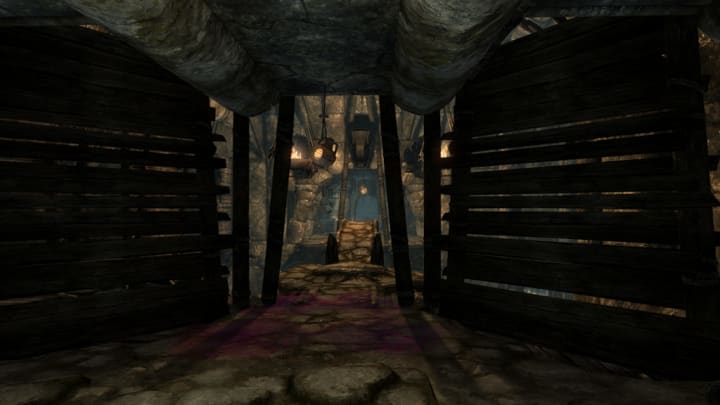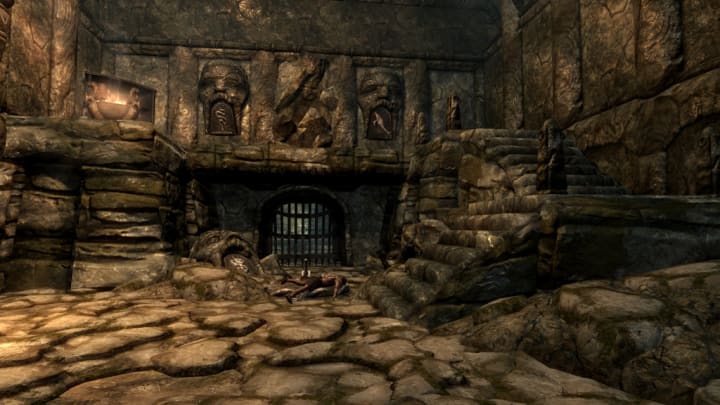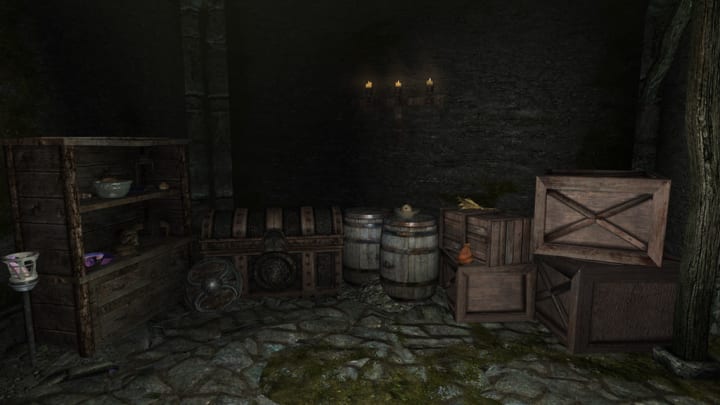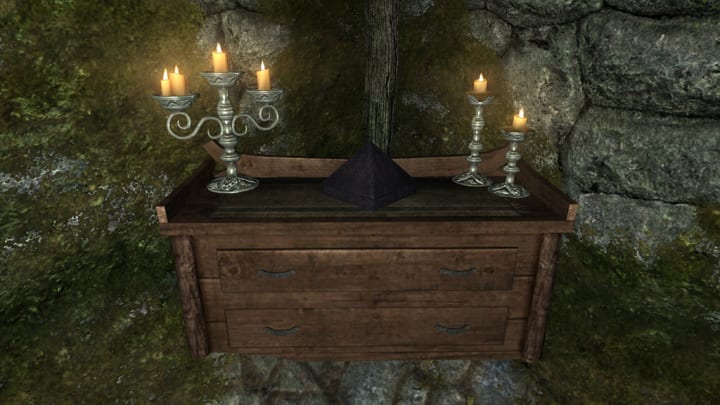10+1 Dungeon Master Tips From The Elder Scrolls: Skyrim
How Playing Skyrim Can Make You A Better Dungeon Master

Inspiration for the Dungeon Master is as great a necessity as a full health / mana bar is for your video game character; without it, there just ain’t much you’re gonna get done. DMs should have a high (passive) perception skill to notice all the places where inspiration may be found. For me, that includes video games.
I am an avid video gamer and have been for just as long as I’ve been playing Dungeons & Dragons and other RPGs. D&D and video games have been feeding my imagination with wondrous items for almost as long as I can remember, and I see little separation between them when it comes to one inspiring the other.
Much of my recent inspiration is coming from that most excellent open world roleplaying video game, The Elder Scrolls: Skyrim. For the almost 900 hours I’ve been adventuring through Skyrim, I’ve taken pages of inspiring notes to possibly use in a D&D session, as player and DM. Allow me to share just a few of the DM tips that have inspired me, in hopes they will do the same for you.
Non-obvious Environmental Hazards
Many of Skyrim's dungeons are lit by pots hanging from ceilings and ledges, filled with burning oil. At first glance, they merely look and act like light sources. A D&D character skilled in combat improvisation may see that those hanging pots of oil could be dropped on or shattered above enemy creatures. Burn, baby, burn!

Bait & Switch
Levers are generally known to open something, such as door or portcullis. Skyrim makes prolific use of them. But there are a few placed in prominent locations that don’t open anything but a world of hurt when they trigger attached traps. Place an obvious lever in the middle of a room, and see which character rushes to activate it and set off a trap, instead of patiently looking for the correct and safe lever hidden under a loose stone in the floor.

Alternate Routes
Dungeons are often very old places. Ceiling sections could collapse any time, metal doors get rusted shut, and floors crumble away as any number of factors weaken them from underneath. Players may be forced to seek alternate routes that take them away from normal hallways, and instead lead them along underground streams, natural cave passages, or tunnels dug by burrowing creatures ranging from halfling to giant size.

Good News / Bad News Scenarios
"The good news is, after a week in this dank, smelly, dreadful place, we found a way out. The bad news is that it's at the top of a 100-foot moss-slickened pit, and none of us can fly."

Previous Adventurers
You may not always be the first adventurers to delve into the depths of a dungeon. Previous adventurers may have left signs, unknowingly or on purpose, for other adventurers to follow. For example, the mass of decaying bodies and rotting bones spread around that lone, unopened chest could be a sign of caution.

Adventure Seeds
A decaying scroll on a forgotten shelf, a journal found on the remains of a dead adventurer, or a hastily-drawn symbol on the wall, could be a subtle or major clue to get players thinking and working together to uncover what may be their next adventure. If they survive this one, of course.

3D Encounter Locations
Go beyond the same old boring square, one-level rooms, and give your encounter locations life by creating rooms with multiple levels and layers. The tactical elements a 3D room adds to combat encounters may be just what’s needed to liven up the session. Or have your players cursing you until the end of the encounter.

Puzzled!
Break up the monotony of combat and exploration by giving players a bonafide puzzle to solve. Get them using those skills they use the least. This is one of the best ways I know to foster group and individual roleplaying, as players tend to call upon a wider range of their character’s skills in solving a good puzzle.

Crate & Barrel
Fill those crates, barrels, tables, desks, shelves, and refuse piles with hundreds of random items, along with the occasional above-average or magical item. When players know they have a chance of discovering something valuable or necessary (food, water, healing herbs) in those unlikely places, it may help to keep them intrigued, interacting with their surroundings, and more involved with their characters and the adventure.

Time Passages
Create or steal a calendar, with named hours, days, months, years, and ages. Find a way to track the passage of time in all those increments.

Shrines
If gods are present and influential to characters in your campaign, then it could stand to reason they are also known to non-player characters, who may have placed shrines at various locations throughout their lairs. Shrines could confer a temporary blessing to their respective worshipers, or a temporary curse to opposite-aligned worshipers.

There you have it, DMs. I hope those give you some inspiring thought about your own campaigns. If not, then may I suggest you load up and play Skyrim for yourselves, and see what you find inspiring. Game on!
About the Creator
Jim Moreno
Geek content creator.
I live, breathe, and write about PC video games, tabletop roleplaying games, geek culture, military history, tech, entertainment, Life, Love, Liberty, and disco.






Comments
There are no comments for this story
Be the first to respond and start the conversation.